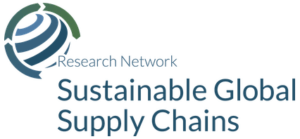Monthly Seminar Series | Patterns in GVC integration, technology and employment structures in Europe: country and sectoral evidence
Jul 16, 2021 02:00 PM - Jul 16, 2021 03:00 PM
Zoom
#Trade and FDI
#EU / Western Europe
#Social and working conditions
Abstract
The paper provides empirical evidence on the relationship between patterns of integration in global value chains (GVCs), the ‘quality’ of such integration in terms of technological capabilities, and the structure of employment in European countries and sectors. We study employment shares in fabrication and headquarter occupations in terms of functional specialisation and employment upgrading, making two specific contributions. First, we explicitly account for pre-existing asymmetries in employment structure. Second we account for the complex role of technology both in terms of country-industries’ own initial technological intensity and that of their GVC partners. To achieve this, we blend data on employment, trade in value added, patents and intangible asset stocks. We find that such pre-existing asymmetries are highly persistent over time. In contrast, GVC participation is not related, in and of itself, to changes in employment structure. However, country-industries that start off as leaders in terms of technological intensity exhibit larger shares of employment in headquarter functions, as they increase their integration in GVCs.
About the Presenter
Filippo Bontadini is a Research Fellow at LUISS University, Rome, studying the nexus between global value chains (GVCs), digitalisation and employment. He also works with the LUISS Lab of European Economics, updating the next release of the EUKLEMS database. Before joining LUISS, Filippo was Research Fellow at OFCE-Sciences Po, where he worked on the INNOPATHS Horizon2020 project, mapping production of green products across European countries and industries. In 2019 Filippo obtained his PhD from the Science Policy Research Unit (SPRU) at the University of Sussex, with a thesis on global value chains and economic development using both input-output analysis and customs’ transaction level data.
The paper provides empirical evidence on the relationship between patterns of integration in global value chains (GVCs), the ‘quality’ of such integration in terms of technological capabilities, and the structure of employment in European countries and sectors. We study employment shares in fabrication and headquarter occupations in terms of functional specialisation and employment upgrading, making two specific contributions. First, we explicitly account for pre-existing asymmetries in employment structure. Second we account for the complex role of technology both in terms of country-industries’ own initial technological intensity and that of their GVC partners. To achieve this, we blend data on employment, trade in value added, patents and intangible asset stocks. We find that such pre-existing asymmetries are highly persistent over time. In contrast, GVC participation is not related, in and of itself, to changes in employment structure. However, country-industries that start off as leaders in terms of technological intensity exhibit larger shares of employment in headquarter functions, as they increase their integration in GVCs.
About the Presenter
Filippo Bontadini is a Research Fellow at LUISS University, Rome, studying the nexus between global value chains (GVCs), digitalisation and employment. He also works with the LUISS Lab of European Economics, updating the next release of the EUKLEMS database. Before joining LUISS, Filippo was Research Fellow at OFCE-Sciences Po, where he worked on the INNOPATHS Horizon2020 project, mapping production of green products across European countries and industries. In 2019 Filippo obtained his PhD from the Science Policy Research Unit (SPRU) at the University of Sussex, with a thesis on global value chains and economic development using both input-output analysis and customs’ transaction level data.
